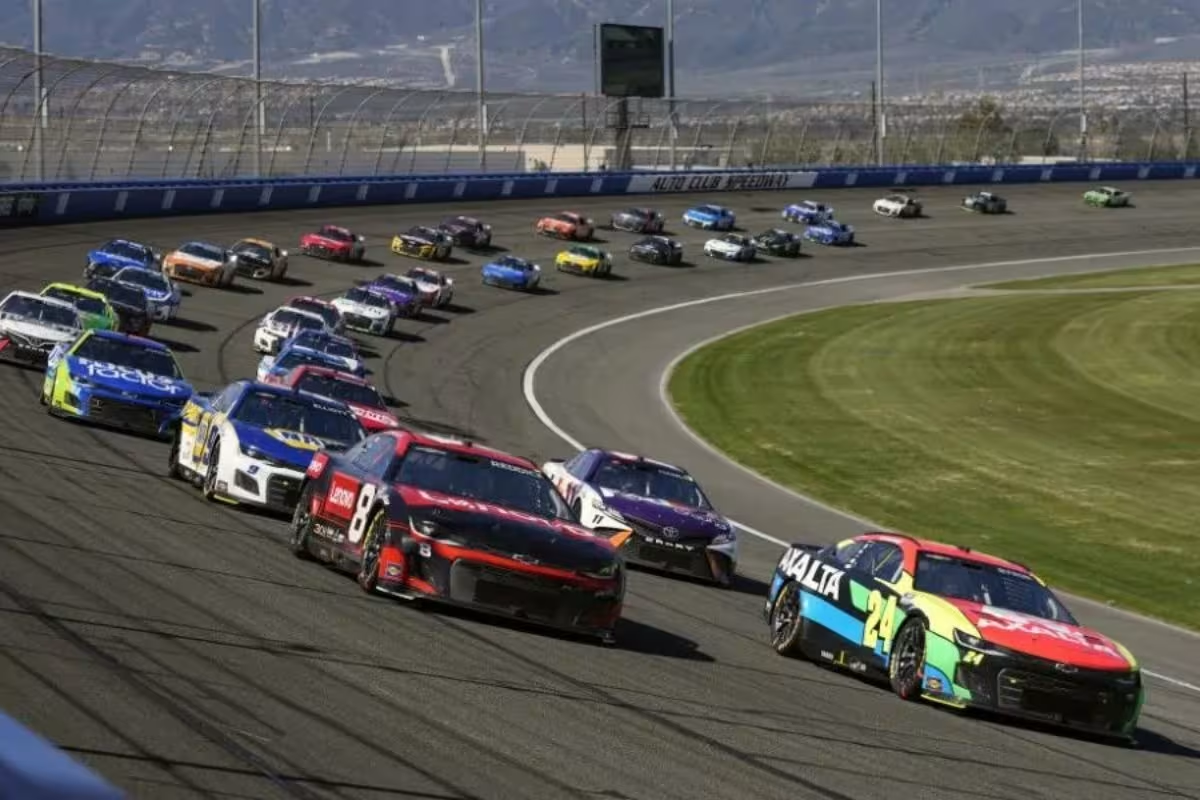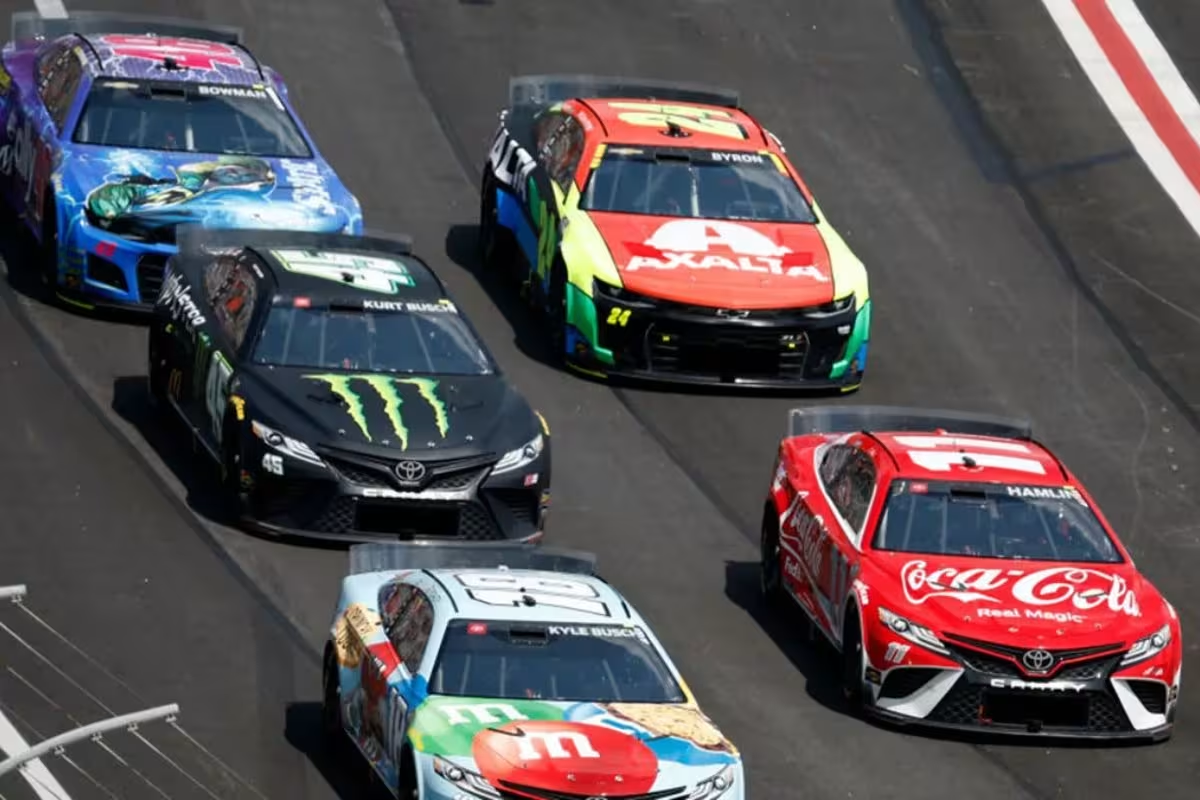NASCAR’s Bristol Tire Controversy: The recent Bristol Tire Controversy has ignited notable discussions within the NASCAR community, particularly following a revealing insider perspective on tire performance. Concerns surrounding unpredictable degradation and the apparent limitations of Goodyear’s monopoly raise critical questions about the integrity of competitive racing. With drivers like Denny Hamlin shows their frustrations regarding inconsistencies, the implications for NASCAR’s regulatory framework come into sharp focus. As the organization faces mounting pressure to restore trust among fans and guarantee equitable conditions, the underlying factors contributing to this debacle warrant closer examination.
Key Highlights
- Denny Hamlin’s concerns about unpredictable tire performance highlight inconsistencies that affect race outcomes and driver strategies at Bristol.
- Recent races revealed significant tire degradation, complicating teams’ tire management and raising questions about Goodyear’s monopoly on tire innovation.
- The application of PJ1 compound failed to improve grip, contributing to challenging track conditions and limiting passing opportunities.
- Speculations about undisclosed tire composition changes have created confusion among teams regarding performance discrepancies between testing and racing.
- Ongoing issues with tire reliability and performance threaten NASCAR’s competitive integrity and fan trust in the sport.
Bristol Night Race Speeds and Fan Reaction
While the Bristol Night Race achieved record-breaking speeds, averaging an impressive 101.277 MPH, the event was marred by a noticeable decline in lead changes, which fell by 46 compared to the earlier Spring Race. This juxtaposition of speed and stagnation raises notable questions about the competitive dynamics of the event. The astonishing pace marked the fastest average speed recorded at the Bristol Motor Speedway since its inception in 1961, yet this accomplishment appears overshadowed by a lack of overtaking and tactical maneuvering that fans typically anticipate.
The decline in lead changes can be attributed to several factors, including Kyle Larson’s commanding performance, which left little room for competitors to challenge for the lead. This dominance may have contributed to the fans’ perception that the race lacked excitement.
Furthermore, the almost negligible fall-off in lap times on Goodyear’s tires may have reduced the opportunities for drivers to exploit tire strategy, further stifling competitive racing.
Fan sentiment indicates a disconnect between the exhilarating speeds achieved and the overall race experience. Spectators are likely seeking a balance between speed and competitive engagement; however, the Bristol Night Race fell short in this regard.
This discrepancy between record speeds and fan expectations has prompted discussions, particularly within the racing community, about the implications of tire performance and race strategy. As NASCAR continues to evaluate these factors, understanding the intricate relationship between speed, lead changes, and fan satisfaction will be critical for future events.
Tire Wear Differences Between Spring and Night Race
The contrasting tire wear experienced during the Bristol Spring Race and the subsequent Night Race highlights notable variations in performance that impacted total race dynamics.
The Spring Race, characterized by the introduction of a resin compound after the switch from the traction-enhancing ‘PJ1 Trackbite’, produced unique tire fall-off patterns. Teams noted that tire codes D-5170 and D-5206 exhibited considerable degradation after just 30 to 40 laps on the warmer Bristol concrete, in an extraordinary race marked by unpredictable performance and tactical adaptations.
Denny Hamlin’s triumph in the Spring Race highlighted his team’s ability to navigate these challenges effectively.
However, the return of the same tire codes for the Night Race revealed a striking contrast in tire behavior. During practice sessions, drivers quickly recognized the altered tire wear, a sentiment echoed by race-winner Kyle Larson, who noted changes in performance by just Lap 10. This awareness afforded Larson a competitive edge, allowing him to dominate the race by leading nearly 92% of the laps.
Conversely, Hamlin’s fourth-place finish raised questions about the consistency of tire performance between the two events.
Hamlin and Others Voice Concerns About Tire Consistency
How can a sport flourish when its participants question the very equipment that dictates their performance? This dilemma has emerged as a focal point in NASCAR, particularly surrounding tire consistency. Denny Hamlin, the driver of the #11 car, has articulated a pressing concern: “It either doesn’t last 40 laps or it lasts 200.” Such unpredictable tire performance undermines the competitive balance that NASCAR endeavors to maintain.
“It (the tires) either doesn’t last 40 laps or it lasts 200.”
“We’ve got to get some consistency in the tires going but other than that, all these cars are equal, the drivers are equal and that’s why it’s so hard to pass.”-(HAMLIN)
The debate has sparked broader discussions among drivers and teams, with diverse stakeholders attributing blame. In this situation, three key points merit attention:
- Monopoly on Tires: Goodyear’s exclusive tire rights leave teams with little recourse. The lack of alternatives limits the potential for innovation and adjustment based on driver feedback.
- Inconsistent Performance: The clear contrast in tire performance between races signifies a troubling inconsistency. As noted, the same tire yielded disparate results, raising questions about the reliability of the equipment under varied conditions.
- Need for Data Analysis: The repeated races on the same track present an opportunity for deeper analysis. Collecting data from these contrasting outcomes is crucial for understanding and addressing the root causes of tire inconsistency.
“What’s the debate? Who are they debating against? Who are they debating with?….”
Goodyear has a monopoly on what they bring. I mean they own the tire rights. And we race what they bring. So I don’t know who they would debate against. I’m sure they can take input from teams, NASCAR, maybe TV.” His co-host TJ Majors continued where Griffin left off to clarify, “But now that you’ve got the same track twice this season. And you’ve got totally different outcomes with the same tire. I think, now you can dissect it more and probably go in and collect a lot of data. And see what you can do differently.” – ’ (Brett Griffin)
As NASCAR navigates these challenges, the need for a more reliable and consistent tire remains paramount. Without addressing these concerns, the integrity of competition may be compromised, leaving drivers and fans in a state of uncertainty.
NASCAR and Goodyear’s Handling of the Track Issues
Despite the unpredictable nature of tire performance in recent races, NASCAR and Goodyear faced considerable challenges in managing track conditions at Bristol. The recent race highlighted the complexities of tire management, particularly when faced with unexpected surface reactions. After a 45-minute practice session revealed issues with the track, officials applied approximately two feet of PJ1 to improve grip on the lower groove. Initially, this compound garnered favor among drivers over the resin used earlier in the season, as it was believed to mitigate tire-cording on cooler surfaces.
However, the anticipated benefits did not materialize as expected. The lower covers quickly showcased a speed advantage, compelling most drivers to seek inside lane passes. Remarkably, the only driver who encountered notable tire issues was Ty Gibbs, whose championship aspirations were jeopardized due to overheating tires after overcoming a prior speeding penalty. This incident highlighted a larger issue impacting short-track racing, suggesting that the problems extend beyond tire performance alone.
Speculations About What Went Wrong and The Spring Race “Mystery”
Amid the ongoing discussions surrounding NASCAR’s tire management and track conditions, the recent Bristol race has sparked a flurry of speculation regarding the underlying issues that contributed to the unexpected performance of the vehicles. The discrepancies between tire testing and race outcomes have left drivers and teams suggesting that factors beyond mere tire wear may be at play.
“I think you go there expecting to wear the right fronts, if you are going back with the same tire. I definitely think it was a huge factor. And I think people probably took a lot of camber and stuff out to try and save the wear on the right front and it hurt. So I do think that probably played a big factor in it.” – (TJ Majors)
Several critical points of speculation arise from this situation:
- Tire Composition Changes: The potential for subtle modifications in tire materials or structures, unbeknownst to teams, raises concerns. Team owner Richard Childress’s remarks indicate a belief that undisclosed changes could have influenced tire performance.
- Inadequate Testing Conditions: Chase Briscoe’s skepticism about the testing process emphasizes the concern that the limited sample size during tire testing may not accurately reflect the race conditions, particularly in warmer months.
“there wasn’t much rubber laid down with only six cars here.” – (Chase)
- Aerodynamic Limitations: The Gen 7 car’s aerodynamic issues have been evident, contributing to diminished passing opportunities and general racing quality on short tracks. This could compound the challenges faced by teams as they grapple with tire management.
“The tire tests they did here with 14 car, it was just like March, you know… We could go 120 laps with no issues. Not sure what is completely different, but it’s not what … everybody expected.” – (Drew Blickensderfer)
The convergence of these factors has created a mysterious environment surrounding the Bristol Spring Race. As teams grapple with understanding the unexpected outcomes, NASCAR must address these critical issues to restore competitive integrity on short tracks.
The quest for clarity in tire performance and vehicle dynamics remains paramount for the sport’s future.
News in Brief: NASCAR’s Bristol Tire Controversy
The Bristol Tire Controversy emphasizes considerable challenges within NASCAR regarding tire performance and management, particularly due to Goodyear’s monopolistic control. Varying tire wear patterns between races highlight inconsistencies that undermine competitive integrity. The concerns raised by prominent drivers, coupled with a lack of effective communication from NASCAR and Goodyear, necessitate immediate attention. Addressing these issues through potential rule changes and improved strategies is crucial for restoring fan trust and ensuring equitable conditions for all competitors in future events.
ALSO READ: The Future of Bristol’s Eliminated Drivers: What Lies Ahead After the Playoffs?



